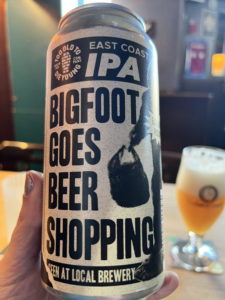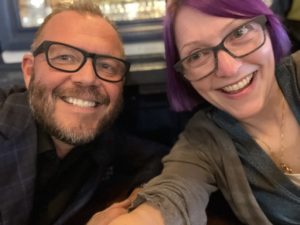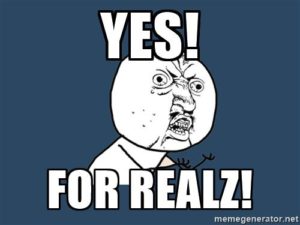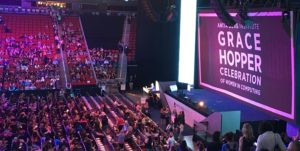 Tech and brewing have the same problem. No, it's not sexism or a general lack of diversity (though there's plenty of both, in both) - it's the near-total absence of historic and digital preservation. As an ex-archivist, this has long irked me, and it's striking how similar many of the barriers are in two (theoretically) quite divergent fields. Brian Alberts wrote a lovely piece calling on modern craft breweries to make a start at preservation, and he noted his (all-too-common) experience as a researcher; you know there are gaps, and sometimes you even know why, but you have to work with what you have. Let's delve a little further into why those gaps exist, and we'll review a bit about archival practice along the way.
Tech and brewing have the same problem. No, it's not sexism or a general lack of diversity (though there's plenty of both, in both) - it's the near-total absence of historic and digital preservation. As an ex-archivist, this has long irked me, and it's striking how similar many of the barriers are in two (theoretically) quite divergent fields. Brian Alberts wrote a lovely piece calling on modern craft breweries to make a start at preservation, and he noted his (all-too-common) experience as a researcher; you know there are gaps, and sometimes you even know why, but you have to work with what you have. Let's delve a little further into why those gaps exist, and we'll review a bit about archival practice along the way.
First, let's imagine that a brewery (or fancy tech startup) has managed to consistently save some portion of their records - again, lots of credit to Brian for some suggestions on how to get started without investing a lot of time and money - what happens when they get to the archivist?
For this fun thought experiment, we're presuming that 1) records, both physical and digital, exist, and 2) there's a professional archivist being paid to process and describe the collection. Processing begins with 'appraisal' - simply figuring out what's there, and what should be kept; it (typically) has little to do with the monetary value - or lack thereof - of the records. No archivist wants to keep everything - it doesn't add anything to the historical record to keep 400 copies of invitations to an annual party, but it does add a huge burden to the administrative and storage costs associated with the collection. Once the collection has been appraised, the real processing begins - this is where things are arranged, described and re-housed - decisions will be made about keeping the original order or moving to something that may be more logical, paperclips and staples may (or may not) be removed, out will come the carefully-labeled, acid-free folders and boxes and Mylar sleeves for photos, and the collection will be described at whatever level (e.g. collection-level, folder-level, item-level) was desirable and/or possible. Many assume that 'everything' gets digitized at this point - and archivists will laugh and laugh at this because it's enormously expensive and time-consuming. This doesn't mean there's a lack of interest or will to do that work - digitization projects are awesome - it's just rare that it gets funded, even in organizations with relatively deep pockets.
You'll notice we're primarily talking about paper and photographic records here - digital records, larger objects and other formats require even more work - and again, we're assuming that 1) someone has kept it and 2) someone is being paid to organize and provide access and (additional degree of difficulty alert!) 3) there are short and long-term preservation plans in place. Long-term digital preservation is incredibly complex, expensive and difficult, so we won't get too much into it here, but even short-term efforts require considerable thought and effort; every archivist has a story about getting a box of old Palm Pilots or 8-inch floppy disks that contain largely unrecoverable data.
And there are other allied efforts that could be taking place - an oral history program would typically try to cover a range of experiences; interviewing staff in different roles, at different levels and with different experiences to capture their stories. All too often, we only hear the perspectives of the company's founder, or the head brewer; we rarely value the stories of the junior coder, the middle managers or those on the packaging line.
Swinging back to tech for a moment, let's consider how deep those pockets are - and how none of that cash is going to preserve any aspect of most companies' histories. Of the larger companies, both tech and non-tech, that I've worked for (and I’m obviously excluding museums, libraries and archives here, since that is All They Do), I can count two that ever had any sort of formal archival program, and in both cases (HP and GSK) - that support has waxed and waned over the years; some of HP's historic records were destroyed in the Santa Rosa fires last fall, and when I left GSK, the formal management of the archives was a part-time effort. Many, if not most, of today's most successful and influential tech companies have no formal or informal program to capture their histories; in fact, they often have policies that actively undermine that goal - here's how.
When it comes to what archivists call born-digital materials - emails, Word documents, PowerPoints and so on - companies often actively delete and destroy those materials. There are a number of reasons for this, but the two biggest are legal and financial: the legal department is happy if there's a lot of regular deletion, since that means there's less to turn over in any discovery process in the case of a lawsuit, and those writing the checks don't want to pay for ever-increasing, expensive digital storage (cloud or otherwise). As a consequence, many companies have official records management policies that ensure email is deleted every x number of days if not explicitly stored elsewhere (though this is different if you work in fields that operate under a lot of preservation orders, like pharma - some things you'll need to keep forever). And not infrequently, all records management policies are drawn up by the legal department, with no input from any other stakeholders; historic preservation, either short- or long-term, is rarely on anyone's mind.
And knowing how quickly things change in tech, it's incredibly difficult even for those of us who work for global tech companies to trace through the path of a decision from a month ago, much less several years (or even decades) - it all becomes tribal knowledge and corporate lore. I could describe for you the cascade of poor decisions that the dot-com I worked for in the late 1990s undertook before finally failing in the dot-com crash, but it would be almost entirely folkloric; there is no trace of the emails, and I suspect I may have one of the few copies of one of the annual reports, though interestingly, a lot of my old code is still floating around on the Internet Archive, preserved purely by chance (but hey, you can still see some of our old job postings).
While it's a huge loss for future (or even modern) researchers, it's also a potential financial loss for companies; while the use case that most people understand readily is that of finding material to use in advertising or PR campaigns, keeping those records that record important business decisions can be key records in trademark disputes and other less-pleasant aspects of the business world. For tech companies, this means a lot of intellectual property, whether code or copy, would be preserved; for breweries, there's the obvious ability to find old recipes and packaging artwork, as well as beer names and labels for the now-inevitable trademark spat.
So, with all that said, is anyone doing it right?
 It's true that even larger breweries with long histories infrequently employ professional archivists - while Anheuser-Busch and Guinness have (or perhaps had, in the case of A-B?) formal programs, Guinness only got into the historic preservation game in 1998. Fullers does have a wealth of material, a fraction of which they display in a well-curated collection within the brewery, but the ongoing processing, arrangement and preservation strategies are overseen by one of the senior executives as something of a side project. If there is a model to follow, Carlsberg is one of the best; they have a team of professional archivists who manage the usual work you find in that sort of setting - arrangement, description, reference and digitization (where feasible). Carlsberg and Guinness both have the depth of history and wealth of materials that allow them to essentially run beer theme parks that use primary sources as the underpinning: a visit to the Guinness Storehouse is entirely unlike any brewery tour, but it does a fabulous job of highlighting historic advertising and key company documents, while the ongoing work of processing and preserving the collection goes on behind closed (but accessible by appointment) doors. The Carlsberg tour experience is certainly more like a brewery tour - indeed, their Jacobsen line is brewed in a small section of the historic brewery complex, while the modern brewery for their flagship lager is off-limits - but they do a very good job of mixing the history with the modern experience. An entire portion of the historic physical plant is set up as a museum, and it does a wonderful job of mixing 19th and early 20th century advertising with some of the company's documents that tell the story of Carlsberg, the Jacobsen family, the growth of brewing science and the globalization of the industry.
It's true that even larger breweries with long histories infrequently employ professional archivists - while Anheuser-Busch and Guinness have (or perhaps had, in the case of A-B?) formal programs, Guinness only got into the historic preservation game in 1998. Fullers does have a wealth of material, a fraction of which they display in a well-curated collection within the brewery, but the ongoing processing, arrangement and preservation strategies are overseen by one of the senior executives as something of a side project. If there is a model to follow, Carlsberg is one of the best; they have a team of professional archivists who manage the usual work you find in that sort of setting - arrangement, description, reference and digitization (where feasible). Carlsberg and Guinness both have the depth of history and wealth of materials that allow them to essentially run beer theme parks that use primary sources as the underpinning: a visit to the Guinness Storehouse is entirely unlike any brewery tour, but it does a fabulous job of highlighting historic advertising and key company documents, while the ongoing work of processing and preserving the collection goes on behind closed (but accessible by appointment) doors. The Carlsberg tour experience is certainly more like a brewery tour - indeed, their Jacobsen line is brewed in a small section of the historic brewery complex, while the modern brewery for their flagship lager is off-limits - but they do a very good job of mixing the history with the modern experience. An entire portion of the historic physical plant is set up as a museum, and it does a wonderful job of mixing 19th and early 20th century advertising with some of the company's documents that tell the story of Carlsberg, the Jacobsen family, the growth of brewing science and the globalization of the industry.
In short, there are a few models for brewers to look up to when thinking about how to begin saving and organizing to tell their stories in the long-term; what about tech? In truth, the examples are just as few and far between, if not more so. HP (another of my former employers, although as a contractor I was, ironically, safe from the decimation happening all around me during Carly Fiorina’s reign of terror) and IBM have both made some efforts (and, if memory serves, both had full-time corporate archivists at one time, though I believe that is not the case now for either one), but they seem to be rather piecemeal; indeed, the majority of HP's historic preservation now seems to be done by volunteers; it's not unlike the breweriana community. While fans and enthusiasts may do a great job of collecting and documenting certain things, they can't save the depth and quality of material that should be in a real archival facility.
 And there are certainly ways to ensure records and artifacts are preserved without launching a brand-new department: companies can partner with their local museum or university archives to get going (this also means they should fund some permanent headcount and ensure there is a physical space for their collections) - the expertise they need is already available locally. Cisco has taken this approach to good effect, and the Oregon Hops and Brewing Archive is a natural partnership opportunity for Pacific Northwest breweries, though again, some financial help could help move them from a 'community archiving project' into a fully-funded program with more scope to collect, preserve and share brewing history.
And there are certainly ways to ensure records and artifacts are preserved without launching a brand-new department: companies can partner with their local museum or university archives to get going (this also means they should fund some permanent headcount and ensure there is a physical space for their collections) - the expertise they need is already available locally. Cisco has taken this approach to good effect, and the Oregon Hops and Brewing Archive is a natural partnership opportunity for Pacific Northwest breweries, though again, some financial help could help move them from a 'community archiving project' into a fully-funded program with more scope to collect, preserve and share brewing history.
And partnering with other organizations doesn’t mean giving up control over who sees what and when; there are plenty of archival collections out there with restrictions on what can be accessed or published, often with a specific timescale built in (e.g. ‘not for public access until 2050’ or similar requirements; you can put all sorts of complications in your deed of gift documentation if you so desire), so worries that a competitor may steal a recipe or other intellectual property can be relatively easily managed.
Although it's likely not feasible for every brewery to get to the world-class standard of the Walt Disney Archives, there is no real excuse for most deep-pocketed tech companies to not make at least a gesture in that direction (and here's a handy case study that can start the wheels turning). While corporations cannot control how future historians view them, by passively (or actively) limiting the available records, they limit the stories that can be told; by ceding the narrative to chance, they abdicate all opportunity to select which stories might be told.
Finally, a quick postscript: the white glove thing. In most archival facilities, white cotton gloves are only used for handling photographs; you are more likely to damage paper - especially brittle, highly-acidic, 19th and 20th century paper, which is typically in much worse condition than earlier, rag-based paper - with gloved hands than you are with clean hands. Your television lied to you.
This piece also appears on Medium.
 Welcome to the first post of 2024, and it’s a very brief one – I’ve spun off Weirdo Guide to Dublin Pubs to its own home, and will be posting those stories over there, but there will be new content here as well, just not quite so specific; apologies in advance if I do things like suggest you sign up for my next #DAM webinar.
Welcome to the first post of 2024, and it’s a very brief one – I’ve spun off Weirdo Guide to Dublin Pubs to its own home, and will be posting those stories over there, but there will be new content here as well, just not quite so specific; apologies in advance if I do things like suggest you sign up for my next #DAM webinar.












